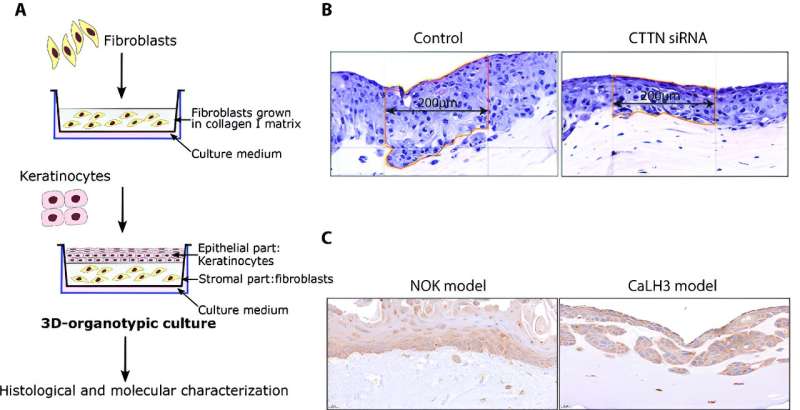This article has been reviewed according to Science X's editorial process and policies. Editors have highlighted the following attributes while ensuring the content's credibility:
fact-checked
trusted source
proofread
Artificial oral mucosa as a model for testing dental biomaterials

A new study suggests that lab-grown oral mucosa can successfully be used for testing biological effects of dental materials. The project is a collaboration between the Institute of Oral Biology (IOB) and the Nordic Institute of Dental Materials (NIOM) and is published in Biomaterial Investigations in Dentistry.
The oral cavity is continuously exposed to a range of chemical substances released from dental materials used in dental fillings and prostheses. Since these materials will be in the mouth for a longer period, it is important that dental materials are safe and do not cause adverse effects on structures in the oral cavity, including the oral mucosa.
Therefore, investigation of biological effects of dental materials using suitable laboratory model systems is crucial in the development and/or refinement of dental materials. In this regard, single-cell cultures (epithelial cells, fibroblasts) derived from oral mucosa and grown as a two-dimensional (2D) culture have been widely used for this purpose.
3D models that mimic the structure of oral mucosa
As oral mucosa is a complex three-dimensional (3D) structure consisting of various cell types, using 2D model systems is inadequate to understand the cellular processes dependent on cell-cell interactions between different cell types and to obtain clinically relevant biological effects of dental materials. In this context, in vitro, 3D models consisting of different cell types are gaining popularity in life science research.
The researchers have successfully used 3D models consisting of normal oral keratinocytes (NOK) and cancerous keratinocytes grown on top of a collagen matrix consisting of normal oral fibroblasts (NOF), thereby mimicking normal oral and cancerous oral epithelium. They have previously used these models to examine proliferation, differentiation, and invasion of tumor cells as well as the interaction between bacteria and oral epithelium.
Investigating the biological effects using 3D models
In the current study, a collaborative project between the Institute of Oral Biology (IOB) and the Nordic Institute of Dental Materials (NIOM) recently published in Biomaterial Investigations in Dentistry, researchers have investigated the biological effects of 2-hydroxethyl methacrylate (HEMA), a major constituent of dental resins, on laboratory engineered 3D-organotypic models of oral mucosa.
The 3D models were created by co-culturing NOK on top of a collagen I matrix consisting of NOF. Using several analysis methods (morphometric/histological analysis, qRT-PCR, immunohistochemistry), the treatment of 3D models consisting of OEC and NOF was found to increase apoptosis of NOK.
In addition, HEMA treatment was found to increase autophagy flux in NOK as indicated by the expression of SQSTM1 mRNA and corresponding protein levels. These results indicate that 3D-organotypic co-cultures of NOK represent a biologically relevant model system for investigating the biological effects of HEMA and other dental biomaterials.
Nevertheless, establishing and maintaining NOK culture is expensive and difficult, as NOKs tend to differentiate after a limited number of passages in 2D cultures. Hence, they investigated the possible use of oral cancer cells as an alternative to NOK for 3D models. Their results indicated that 3D-co-cultures of NOK and oral cancer cells reacted similarly to HEMA treatment with respect to cell proliferation and activation of autophagy flux. These observations open the possibility for the use of 3D models based on oral cancer cells as an easier and cheaper model system for testing biological effects of dental materials.
These models are flexible with respect to the cell types, timepoint, and duration of treatment and offer a wide range of downstream analysis possibilities (morphometric/histological analysis, global and pathway-focused molecular analysis) using the artificial tissue or culture medium.
More information: Sunita Sharma et al, Investigation of biological effects of HEMA in 3D-organotypic co-culture models of normal and malignant oral keratinocytes, Biomaterial Investigations in Dentistry (2023). DOI: 10.1080/26415275.2023.2234400



















